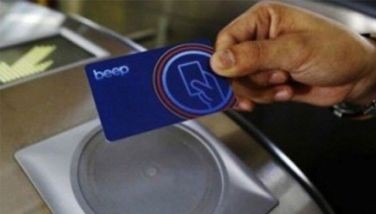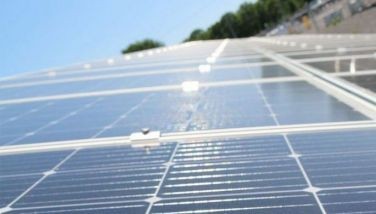BBB or bust

Build (BBB) program and the country’s construction industry going into the last quarter of the year as attempts are underway to mitigate the setbacks caused by work suspension resulting from the extended quarantines.
Actually, BBB – the ambitious P8.4-trillion flagship program of the Duterte government that promises to usher in a golden age in infrastructure, has been subjected to a variety of challenges since it was unveiled in 2017.
First off was the need to calibrate financing sources, originally announced to solely come from low-interest official development assistance loans. China was expected to provide most of the funding for several of the big-ticket items, but for many reasons, including higher-interest loan terms, nothing significant seems to be moving.
After trying for about a year, the government scored some success with Japanese aid, coming through with the desired soft loan financing although for a limited number of projects only. Finally, the private sector was welcomed back through a tweaked hybrid financing approach to get more projects off the ground.
In 2019, delays in the approval and release of the national budget contributed to stoppages in the construction schedules of all government projects. This resulted in a significant slowdown in economic growth during the first quarter of the year.
Budget reallocation
This year, the economy all but ground to a halt during the lockdowns which incidentally have been extended again until the end of October, although the harsh quarantine restrictions that started in mid-March had earlier been eased for the construction sector.
Even then, the Bayanihan to Heal as One Law took a hefty slice of government funds allocated for BBB projects to finance the government’s extended social amelioration and medical response for the unbudgeted pandemic-induced expenses.
The biggest cut of about P122 billion came from the Department of Public Works and Highways (DPWH), and around P9 billion from the Department of Transportation (DOTr). Consequently, the latest review of BBB projects led to an overall reduction in program spending, now down to P4.13 trillion.
In the usual dagdag-bawas style, some flagship projects were shelved, and a number of new ones surfaced. On the chopping board were those that failed to break ground over the recent years despite being declared as priority projects. This included the P56-billion Kanan Dam project and the Sangley Airport upgrading.
New are the P500-million Virology Science and Technology Institute of the Philippines in the New Clark City, the P1.1-billion General Santos Airport, the P950-million Central Command Center for the Land Transportation Office, and the P750-million Motor Vehicle Recognition and Enhancement System.
‘Shovel-ready’
The 13 new projects added to the list are all supposedly “shovel-ready,” meaning they can start construction within the next few months. Many of them will have strong components to boost the government’s nationwide digital connectivity.
With barely two years left of the Duterte government, projects that are tagged at about a billion pesos have a better chance of getting off the ground and being completed in a shorter time, unlike big-ticket transport and mobility items that require massive amounts of concrete-pouring.
Most of them also are with ready funding made available from national budget allocations. Among them are the P34-billion ICT Capability Development and Management Program, the ongoing P20.3-billion National Broadband Program, and the P26.3-billion Philippine Identification System.
Just how “shovel-ready” these projects are under the General Appropriations Act, however, will depend on improved capabilities of the DPWH and DOTr, two of the government’s agencies that are responsible for more than half of listed BBB projects.
Outside of the pandemic reasons, both agencies have struggled with not being able to spend their annual allocations for years. The DPWH, in particular, needs to improve its network of contractors who have been largely responsible for the work delays.
PPP expressways and airports
The Duterte government has now unabashedly welcomed to its BBB flagship project list quite a number of private sector participants. Unsolicited bids entered under the Public-Private Partnership (PPP) program have, of late, been given more favorable vetting by the National Economic Development Authority, paving the way for more projects in the BBB list.
Quite a number of approved PPP projects are expressways that rely on toll fees for business sustainability. While they will be built at almost no expense to the government and use no taxpayer money, an increase in the cost of public mobility cannot be avoided.
Still, this should more than compensate for the money that goes to lost productivity and time resulting from congested roads and slow-moving traffic. The government, however, has to pursue mass transportation projects using ODAs to enable working Filipinos to benefit from lower mobility fares.
Unsolicited proposals for airport projects are also more prominently featured in the new BBB listing. The biggest by far is the P735.7-billion New Manila International Airport in Bulacan by the San Miguel conglomerate.
While some think tanks have cautioned against the recent frenzy by the private sector to take on international airport projects (Laguindingan and Davao in Mindanao; Bacolod-Silay, Kalibo, and Iloilo in the Visayas; and the Ninoy Aquino in Metro Manila), we must look at bright prospect of future economic growth partly fueled by tourism, especially after this pandemic is over.
Facebook and Twitter
We are actively using two social networking websites to reach out more often and even interact with and engage our readers, friends and colleagues in the various areas of interest that I tackle in my column. Please like us on www. facebook.com/ReyGamboa and follow us on www.twitter.com/ ReyGamboa.
Should you wish to share any insights, write me at Link Edge, 25th Floor, 139 Corporate Center, Valero Street, Salcedo Village, 1227 Makati City. Or e-mail me at reydgam[email protected]. For a compilation of previous articles, visit www.BizlinksPhilippines.net.
- Latest
- Trending






























